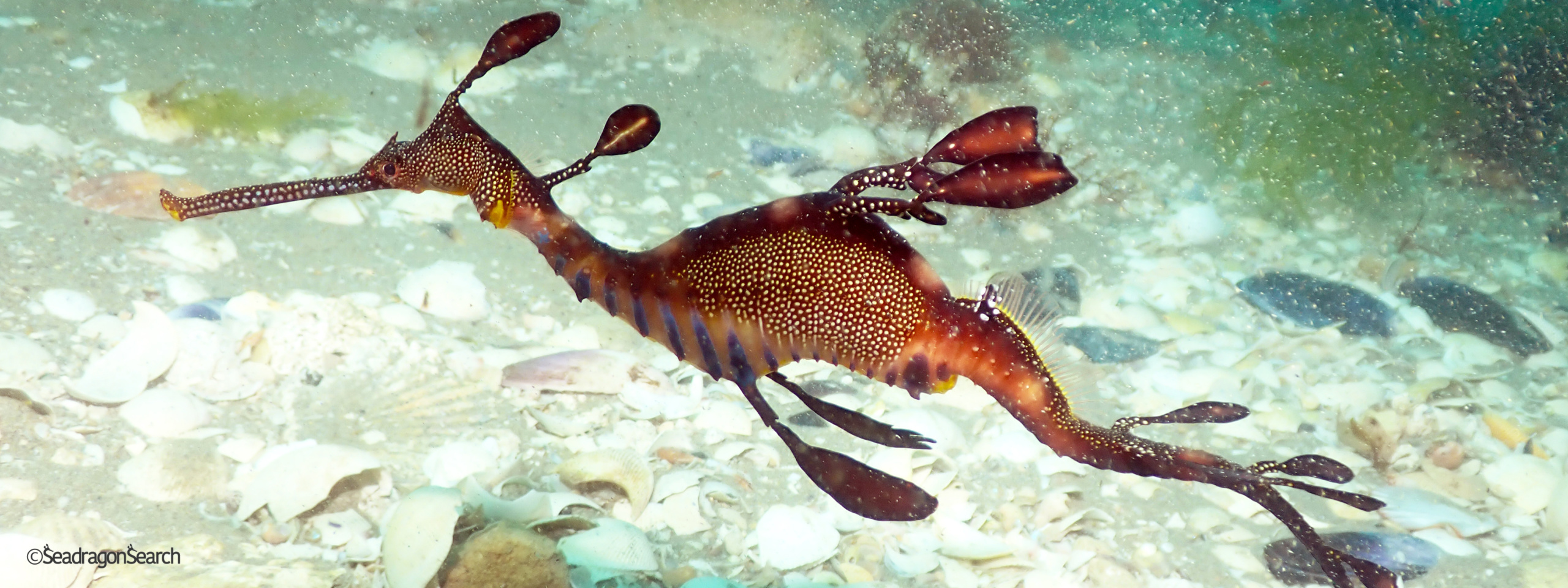Genetics research gives scientists valuable information about how groups of seadragons living in different areas are connected to one another, as well as how resilient each group might be to challenges in their environment. This knowledge provides a foundation for making decisions about how best to conserve seadragons and their habitats.
Each species has unique features that come from its genes, and the term ‘genetic diversity’ refers to information encoded in DNA that may or may not be expressed in the animal. Different individuals carrying different gene copies can cope more or less effectively with stress factors in their environment, depending on their unique traits. Studying the genetic diversity of a species helps indicate how capable that species is likely to be coping with challenges in its environment. Less diversity means that a species has fewer options for adapting to changes, and this can be a factor leading up to extinction, so it’s an important concept to understand for conservation.
Several years ago, researchers Dr. Nerida Wilson from the Western Australian Museum and Dr. Greg Rouse and Dr. Josefin Stiller from Scripps Institution of Oceanography at UC San Diego set out to better understand genetic diversity in both common and leafy seadragon populations. Getting samples for genetics work involved scientific diving to locate the seadragons and clip small pieces of tissue from their appendages. To ensure that the same seadragon was only sampled once, the researchers also took photographs of their faces, since the pattern on them differed among individuals. DNA was extracted from the tissue samples, and then genes were sequenced so that they could be compared to one another.
Based on the findings from these studies, most known populations of leafy seadragons have low mitochondrial genetic diversity, and protecting what diversity they have should be a priority for conservation. Common seadragon populations showed lower mitochondrial genetic diversity on the east coast around New South Wales and Tasmania compared to populations in South Australia and Western Australia. This means east coast seadragons are likely at a higher risk of extinction, and should be managed accordingly. Almost all populations of common seadragons studied showed that they were not genetically connected, indicating that if there was a local extinction event, new immigrants would not turn up from neighbouring populations. Within New South Wales and Tasmania, the populations of dragons are relatively similar to one another genetically, but they differ in size and appearance, which further suggests that they are impacted by their environment- another important consideration in planning for conservation measures.
Genetics work provides important data for conservation purposes, but there are some mysteries that genetics studies haven’t unraveled, such as how long wild seadragons live and how far individual seadragons move. This kind of knowledge will be addressed with photographic data from SeadragonSearch, which has the potential to begin answering some of these other questions. Using a variety of tools, scientists will be able to paint a more complete picture of seadragon populations and how best to advocate for their survival.

